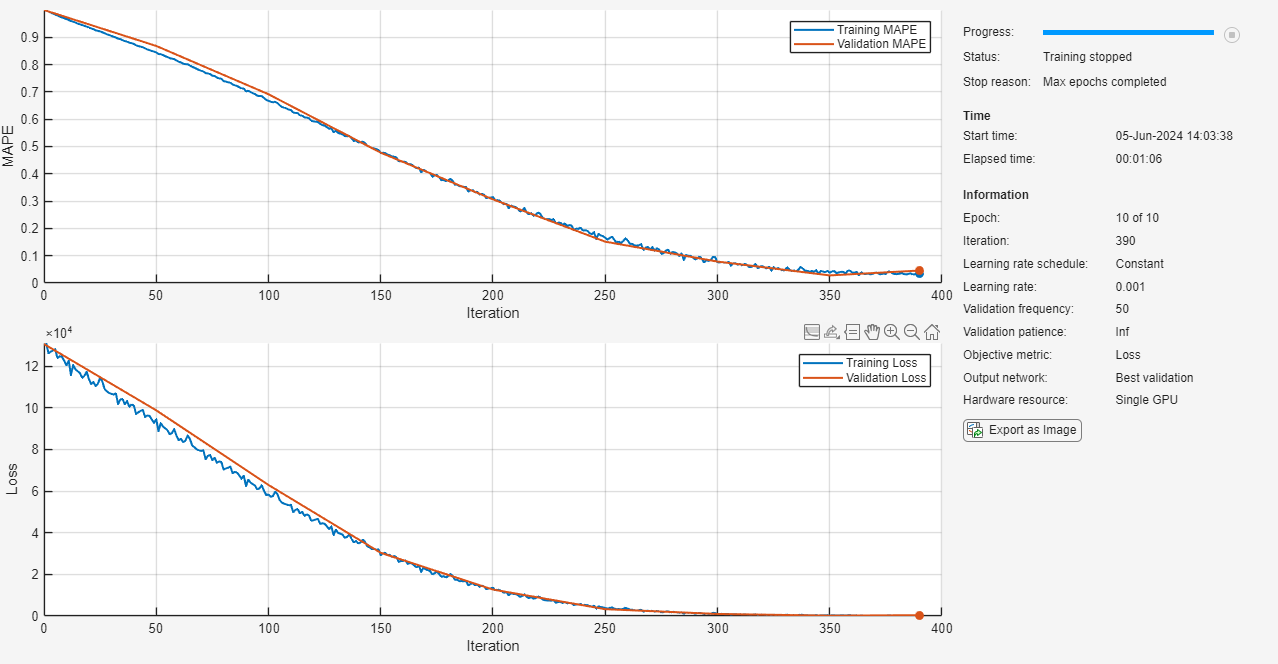mapeMetric
Description
Use a MAPEMetric object to track the mean absolute percentage
error (MAPE) when you train or test a deep neural network.
To specify which metrics to use during training, specify the Metrics option of the trainingOptions function. You can
use this option only when you train a network using the trainnet
function.
To plot the metrics during training, in the training options, specify Plots as "training-progress". If you specify the
ValidationData training option, then the software also plots and records the
metric values for the validation data. To output the metric values to the Command Window
during training, in the training options, set Verbose to true.
You can also access the metrics after training using the
TrainingHistory and ValidationHistory fields from
the second output of the trainnet function.
To specify which metrics to use when you test a neural network, use the metrics
argument of the testnet
function.
Creation
Description
metric = mapeMetric(PropertyName=Value)Name, NetworkOutput, and NormalizationFactor properties using name-value arguments.
Properties
Object Functions
trainingOptions | Options for training deep learning neural network |
trainnet | Train deep learning neural network |
testnet | Test deep learning neural network |
Examples
More About
Version History
Introduced in R2024b
